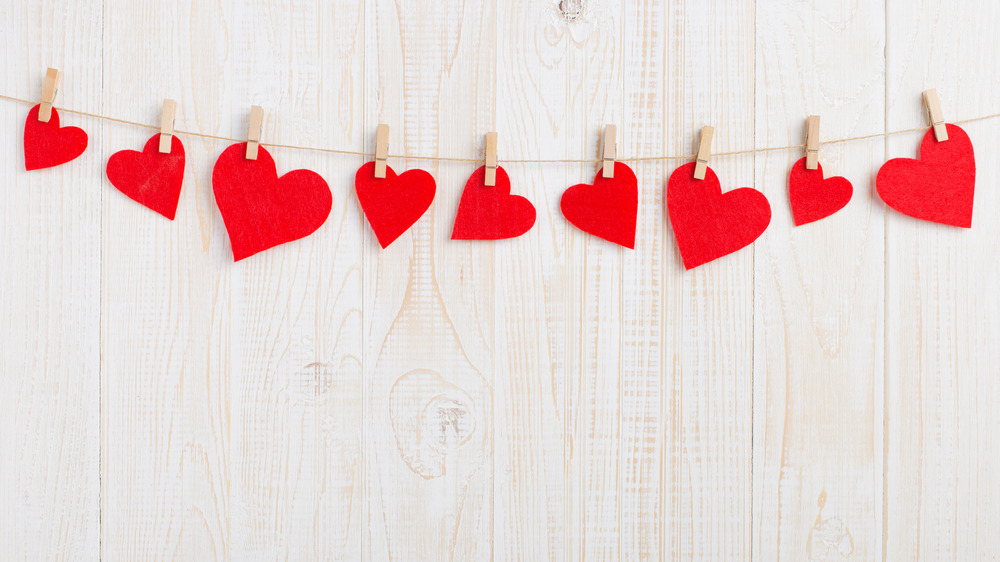The Real Reason We Associate Hearts With Love
As we approach Valentine's Day, we see more and more heart-centric merchandise available with which to celebrate the people we love and the very concept of love itself. Where did the iconic and instantly recognizable heart shape come from? How did human hearts become associated with love in the first place?
Per History, "its historical origins are difficult to pin down," but there are many theories. Ancient Greek and Roman people reportedly used a species of giant fennel with heart-shaped leaves, called silphium, as a form of birth control. The plant was so popular that it was "cultivated into extinction" and some believe its association with love and sex led to the shape of its leaves becoming a symbol for love. In fact, per the Ideas blog at TED, the oldest known image of the heart shape is credited to a coin from the Roman city of Cyrene (near modern Shahhat, Libya), which is thought to be actually be a rendition of a silphium leaf.
Another possibility discussed at History draws upon the writings of ancient philosophers such as Galen and Aristotle, who described the human heart as "three chambers with a small dent in the middle." This may have led artists during the Middle Ages to use this description when making anatomical drawings, and the association of the human heart with love and happiness in turn led to this shape being used as a symbol of romance.
According to the Ideas blog at TED, there are even older examples of people associating the human heart with strong emotions.
'How do I love thee?' The heart's where we start
The poet Sappho wrote about her "'mad heart' quaking with love," while philosopher Plato opined that the chest was central to love as well as fear, anger, and pain. Romans believed, incorrectly, that the fourth finger of the left hand had a vein that ran directly to the heart, and referred to it as the vena amoris. Today's tradition of wearing wedding rings on the fourth finger of the left hand began during Roman times because of this belief.
The first known image of the traditional "two lobes and a point" heart shape that was not modeled after the silphium leaf appeared in 1344 in an illustration from the manuscript The Romance of Alexander, written in part in the French dialect of by Lambert le Tor and completed by Alexandre de Bernay. The picture within features a woman raising up and looking at a heart while the man who presumably presented it to her stands before her and touches his chest.
This led to an onslaught of heart imagery in manuscripts as well as on jewelry, cards, sword handles, wood carvings, burial sites, and more. By the end of the 18th century, elaborate commercial valentines featuring "traditional symbols of love — flowers, hearts, cupids, birds" brought mass-produced images of hearts meant to symbolize love and affections fully into the mainstream. This cemented the heart shape's reputation as one of the most ubiquitous and recognizable symbols, a status that continues to this day.

